 What’s on my mind this month is the importance of academic citizenship to celebrate our collective participation in the shared governance of the School of Medicine and its success.
What’s on my mind this month is the importance of academic citizenship to celebrate our collective participation in the shared governance of the School of Medicine and its success.
I have always been proud of the outstanding scholarship and collegial, collaborative environment at the School of Medicine. Each and every one of us plays a vital part in what makes our school a top-tier institution. In addition to our daily contributions, whether it is in terms of educating, providing patient care, conducting research or ensuring the smooth operation of all administrative functions, we have multiple opportunities to participate in the shared governance of our great enterprise.
The critical thing to remember are the multiple options available for the broad participation of our SOM community. Many of you may be unaware of the various avenues that we have to gather input from faculty, staff, trainees and students on decisions made at the School of Medicine. Therefore, this issue of the SOMnews highlights the formalized committees on which all are strongly encouraged to participate. Going forward, we will provide periodic updates on these committees and their activities.
I want to reaffirm the importance of everyone’s input in School of Medicine policies and procedures. To bring out the best in all of us, we need to engender a culture of collaboration and participation. We must truly listen to each other and involve each other in the process of sharing information, ideas and feedback. When we sit down and have an open dialogue, we establish rapport that leads to common understanding of our mutual goals and objectives, and enables us to achieve them together.
It is incumbent upon leadership to cultivate an environment in which faculty, staff, trainees and students are encouraged and welcomed to engage in dialogue with their leaders. I, too, enjoy engaging faculty, staff, trainees and students. For this reason, I host regular luncheons with small groups of students to keep an open dialogue with them. I meet with the Chairs and Directors and the Senior Staff regularly to discuss important developments occurring or planned in the School, as well as listening to any concerns of faculty, trainees and students.
Finally, I want to challenge everyone to increase their level of communication and participation. We all have valuable roles in this institution and its mission. Importantly, no one person has a monopoly on good ideas. It is critical to the School’s success that everyone shares the responsibility of finding new solutions to old problems and new ways of doing things. The difficult part is getting the good ideas out into the light of day. Academic citizenship of shared governance only works if we stand up, raise our issues, and then propose concrete strategies to rectify the problems that exist.
In last month’s newsletter, we announced our decision to create a new Strategic Plan for the School of Medicine. This Plan will set goals for each of our mission areas: education, clinical care, research, and community outreach and service. Although the initial framework of the Strategic Plan was developed by a selected group of School of Medicine faculty, staff, students and trainees, everyone now has a responsibility to comment on, revise, rework or affirm this “strawman plan.” Each and every one of us has a role in shaping our Strategic Plan into a more robust vision for our institution. We heard from many of you at the all-hands retreat this month, but I want everyone to have an opportunity to provide their feedback. Therefore, we’ll be sending out the draft Strategic Plan for public comment during the rest of this month. I strongly encourage you to take advantage of this opportunity to shape the roadmap for the future of the School of Medicine.
We are privileged to work at this prestigious, highly-ranked, research-intensive School of Medicine. This is a very important and substantive project where academic citizenship of shared governance can be realized. We must be exceptional stewards, who uncompromisingly and unapologetically advance our mission and vision to educate and train the next generation of physicians, scientists and allied health professionals; to conduct the highest caliber research; to provide exceptional patient-centered care; and to improve the health and wellbeing of the citizens in our local and global communities. By sharing that governance role together, I am confident that we will attain our ambitious goals for our great institution.
In the relentless pursuit of excellence, I am
Sincerely yours,
E. Albert Reece, MD, PhD, MBA
Vice President for Medical Affairs, University of Maryland
John Z. and Akiko K. Bowers Distinguished Professor and
Dean, University of Maryland School of Medicine
Kudos to our colleagues who are experts in their fields and give their all to represent the School of Medicine!
 Maureen Black, PhD, the John A. Scholl, MD, and Mary Louise Scholl, MD, Professor of Pediatrics, Departments of Pediatrics and Epidemiology & Public Health, was invited to present, “Early Child Development: Assessing Parent-Child Interaction and Caregiving Context” at the All Children Thriving conference at the African Academy of Sciences in Nairobi, Kenya, on February 22.
Maureen Black, PhD, the John A. Scholl, MD, and Mary Louise Scholl, MD, Professor of Pediatrics, Departments of Pediatrics and Epidemiology & Public Health, was invited to present, “Early Child Development: Assessing Parent-Child Interaction and Caregiving Context” at the All Children Thriving conference at the African Academy of Sciences in Nairobi, Kenya, on February 22.
 Ken Butler, DO, Associate Professor, and Ben Lawner, DO, MS, EMT-P, Assistant Professor, both from the Department of Emergency Medicine, presented a full-day emergency airway management course for prehospital care providers on February 3. The course was sponsored and organized by Bradford County Emergency Services in Florida and funded in part by an educational grant from the Florida Department of Health. The 22 participants included emergency medical technicians, paramedic trainers, and quality assurance personnel from emergency medical services programs in Jacksonville and Gainesville, FL, who traveled to Baltimore for the training. The didactic portion of the course was followed by a hands-on session in the Anatomy Board lab. Dr. Lawner and Kevin Seaman, MD, Executive Director, Maryland Institute for Emergency Medical Services Systems, were panelists at “EMS Today: The JEMS Conference and Exhibition,” which was held in Baltimore in late February. Their topic was the emerging public health threat of designer drugs such as MDMA (Ecstasy) at music festivals. Dr. Lawner was also a faculty member for the 23rd Annual Conference of the National Collegiate Emergency Medical Services Foundation in Philadelphia in late February, which more than 1200 college-based EMS providers attended. Dr. Lawner led a workshop on “Delirium, Designer Drugs, and Teen Death: Electronic Dance Music Festivals,” which focused on patient encounters during Moonrise Festivals at Pimlico Race Course. He also narrated scenarios for a trauma skills competition and led a skills lab on resuscitation after cardiac arrest. In a roundtable discussion, Dr. Lawner reviewed recent articles on resuscitation, airway management, and trauma care, and he participated as a panelist in the final plenary session, describing how he combines his passion for EMS with his career in emergency medicine. In addition to his appointment on the emergency medicine faculty, Dr. Lawner is the Deputy Medical Director for the Baltimore City Fire Department and provides medical oversight to several paramedic programs. Dr. Lawner and R. Gentry Wilkerson, MD, Assistant Professor, and Jenny Guyther, MD, Instructor, both also from the Department of Emergency Medicine, were faculty members for the national paramedic refresher course hosted by UMBC in late February. The respective titles of their lectures were “Resuscitation Review: Articles You’ve Got to Know!”; “Disaster Response/Preparedness”; and “Pediatrics.” More than 50 veteran prehospital care providers from across the country earned continuing education certificates at this four-day event.
Ken Butler, DO, Associate Professor, and Ben Lawner, DO, MS, EMT-P, Assistant Professor, both from the Department of Emergency Medicine, presented a full-day emergency airway management course for prehospital care providers on February 3. The course was sponsored and organized by Bradford County Emergency Services in Florida and funded in part by an educational grant from the Florida Department of Health. The 22 participants included emergency medical technicians, paramedic trainers, and quality assurance personnel from emergency medical services programs in Jacksonville and Gainesville, FL, who traveled to Baltimore for the training. The didactic portion of the course was followed by a hands-on session in the Anatomy Board lab. Dr. Lawner and Kevin Seaman, MD, Executive Director, Maryland Institute for Emergency Medical Services Systems, were panelists at “EMS Today: The JEMS Conference and Exhibition,” which was held in Baltimore in late February. Their topic was the emerging public health threat of designer drugs such as MDMA (Ecstasy) at music festivals. Dr. Lawner was also a faculty member for the 23rd Annual Conference of the National Collegiate Emergency Medical Services Foundation in Philadelphia in late February, which more than 1200 college-based EMS providers attended. Dr. Lawner led a workshop on “Delirium, Designer Drugs, and Teen Death: Electronic Dance Music Festivals,” which focused on patient encounters during Moonrise Festivals at Pimlico Race Course. He also narrated scenarios for a trauma skills competition and led a skills lab on resuscitation after cardiac arrest. In a roundtable discussion, Dr. Lawner reviewed recent articles on resuscitation, airway management, and trauma care, and he participated as a panelist in the final plenary session, describing how he combines his passion for EMS with his career in emergency medicine. In addition to his appointment on the emergency medicine faculty, Dr. Lawner is the Deputy Medical Director for the Baltimore City Fire Department and provides medical oversight to several paramedic programs. Dr. Lawner and R. Gentry Wilkerson, MD, Assistant Professor, and Jenny Guyther, MD, Instructor, both also from the Department of Emergency Medicine, were faculty members for the national paramedic refresher course hosted by UMBC in late February. The respective titles of their lectures were “Resuscitation Review: Articles You’ve Got to Know!”; “Disaster Response/Preparedness”; and “Pediatrics.” More than 50 veteran prehospital care providers from across the country earned continuing education certificates at this four-day event.
 Natalie Davis, MD, MMSc, Assistant Professor, and Colleen Hughes Driscoll, MD, Assistant Professor, both from the Department of Pediatrics, organized the 8th Annual Baltimore Washington Virginia Perinatal Consortium (BWVPC) conference, held February 23–24 at the Airlie Convention Center in Warrenton, VA. This conference was started by Cynthia Bearer, MD, PhD, the Mary Gray Cobey Professor of Neonatology, Department of Pediatrics. The conference brings together faculty and fellows from the seven regional academic Neonatology fellowship programs and provides a forum for trainees and junior faculty to present their research, practice moderating sessions, as well as network and collaborate with other researchers in the region.
Natalie Davis, MD, MMSc, Assistant Professor, and Colleen Hughes Driscoll, MD, Assistant Professor, both from the Department of Pediatrics, organized the 8th Annual Baltimore Washington Virginia Perinatal Consortium (BWVPC) conference, held February 23–24 at the Airlie Convention Center in Warrenton, VA. This conference was started by Cynthia Bearer, MD, PhD, the Mary Gray Cobey Professor of Neonatology, Department of Pediatrics. The conference brings together faculty and fellows from the seven regional academic Neonatology fellowship programs and provides a forum for trainees and junior faculty to present their research, practice moderating sessions, as well as network and collaborate with other researchers in the region.
 Stephen Davis, MBBS, Professor & Chair; Matthew Weir, MD, Professor; Emerson Wickwire, PhD, ABPP, CBSM, FAASM, Assistant Professor; Steven Prior, PhD, Assistant Professor; Rana Malek, MD, Assistant Professor; Lina Melhem, MD, Clinical Assistant Professor; Braxton Mitchell, Jr., PhD, MPH, Professor; Kashif Munir, MD, Assistant Professor; Toni Pollin, PhD, Associate Professor; and Ava Port, MD, Assistant Professor, all from the Department of Medicine, participated as either a lecturer or roundtable discussant at the American Diabetes Association’s 2nd Annual Diabetes Research Summit, held at the Sheppard Pratt Conference Center in Towson on March 5.
Stephen Davis, MBBS, Professor & Chair; Matthew Weir, MD, Professor; Emerson Wickwire, PhD, ABPP, CBSM, FAASM, Assistant Professor; Steven Prior, PhD, Assistant Professor; Rana Malek, MD, Assistant Professor; Lina Melhem, MD, Clinical Assistant Professor; Braxton Mitchell, Jr., PhD, MPH, Professor; Kashif Munir, MD, Assistant Professor; Toni Pollin, PhD, Associate Professor; and Ava Port, MD, Assistant Professor, all from the Department of Medicine, participated as either a lecturer or roundtable discussant at the American Diabetes Association’s 2nd Annual Diabetes Research Summit, held at the Sheppard Pratt Conference Center in Towson on March 5.
 Martin Flajnik, PhD, Professor, Department of Microbiology & Immunology, presented “The Origins of the Adaptive Immune Response” at the Hopkins Marine Station of Stanford University in Pacific Grove, CA in January.
Martin Flajnik, PhD, Professor, Department of Microbiology & Immunology, presented “The Origins of the Adaptive Immune Response” at the Hopkins Marine Station of Stanford University in Pacific Grove, CA in January.
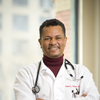 Janine Good, MD, Associate Professor, Department of Neurology, and David Stewart, MD, Associate Professor and Chair, Department of Family & Community Medicine, recently completed training and certification from the Population Health Academy at Thomas Jefferson University in Philadelphia. The Population Health Academy is a 40-hour, continuing education credit (CME, CNE) program that provides an overview of basic concepts in population health. The five-day series is designed for health system leaders and key administrators seeking a comprehensive introduction to the subject. Through case studies and real-life workplace applications, participants in the Population Health Academy review and analyze key areas of Population Health, including U.S. Health Care Organization and Administration; Overview of Population Health; Healthcare Quality and Safety; Health Economics and Population Health; Data Analytics; and Prevention and Chronic Disease Management.
Janine Good, MD, Associate Professor, Department of Neurology, and David Stewart, MD, Associate Professor and Chair, Department of Family & Community Medicine, recently completed training and certification from the Population Health Academy at Thomas Jefferson University in Philadelphia. The Population Health Academy is a 40-hour, continuing education credit (CME, CNE) program that provides an overview of basic concepts in population health. The five-day series is designed for health system leaders and key administrators seeking a comprehensive introduction to the subject. Through case studies and real-life workplace applications, participants in the Population Health Academy review and analyze key areas of Population Health, including U.S. Health Care Organization and Administration; Overview of Population Health; Healthcare Quality and Safety; Health Economics and Population Health; Data Analytics; and Prevention and Chronic Disease Management.
 Rao Gullapalli, PhD, Professor, and Chandler Sours, PhD, Graduate Student, both from the Department of Diagnostic Radiology & Nuclear Medicine, along with David Seminowicz, PhD, Assistant Professor, School of Dentistry, and Luiz Pessoa, PhD, Professor, University of Maryland, College Park, and several of Dr. Gullapalli’s students, hosted a one-day Maryland Neuroimaging Retreat on April 12 in the SMC Campus Center. This is the fourth year that Dr. Gullapalli has organized the event. This year’s theme was “Neuroimaging in the Era of Big Data.” The goal of the retreat was to bring together Baltimore-Washington area neuroimaging researchers, students and post docs. The keynote speaker was Dr. Paul Thompson, who directs the ENIGMA Center for Worldwide Medicine, Imaging & Genomics. In addition to Dr. Thompson, nine other well-known neuroimaging specialists and two selected post docs presented their research, and about twenty poster presentations were highlighted.
Rao Gullapalli, PhD, Professor, and Chandler Sours, PhD, Graduate Student, both from the Department of Diagnostic Radiology & Nuclear Medicine, along with David Seminowicz, PhD, Assistant Professor, School of Dentistry, and Luiz Pessoa, PhD, Professor, University of Maryland, College Park, and several of Dr. Gullapalli’s students, hosted a one-day Maryland Neuroimaging Retreat on April 12 in the SMC Campus Center. This is the fourth year that Dr. Gullapalli has organized the event. This year’s theme was “Neuroimaging in the Era of Big Data.” The goal of the retreat was to bring together Baltimore-Washington area neuroimaging researchers, students and post docs. The keynote speaker was Dr. Paul Thompson, who directs the ENIGMA Center for Worldwide Medicine, Imaging & Genomics. In addition to Dr. Thompson, nine other well-known neuroimaging specialists and two selected post docs presented their research, and about twenty poster presentations were highlighted.
 Sandra Quezada, MD, MS, Assistant Professor, Department of Medicine, gave a presentation on Colorectal Cancer Screening in Spanish to the Latino population in downtown Baltimore. The March 5 presentation was given in the Highlandtown area, in collaboration with the Baltimore City Cancer Prevention program.
Sandra Quezada, MD, MS, Assistant Professor, Department of Medicine, gave a presentation on Colorectal Cancer Screening in Spanish to the Latino population in downtown Baltimore. The March 5 presentation was given in the Highlandtown area, in collaboration with the Baltimore City Cancer Prevention program.
 William Regine, MD, Professor and the Isadore & Fannie Schneider Foxman Chair, Department of Radiation Oncology, presented “Proton Radiotherapy Clinical Trials: Challenges and Hope for the Future” as part of the Visiting Professor Lecture Series in the Department of Radiation Oncology at Medstar Georgetown University Hospital, Washington, DC, on February 26.
William Regine, MD, Professor and the Isadore & Fannie Schneider Foxman Chair, Department of Radiation Oncology, presented “Proton Radiotherapy Clinical Trials: Challenges and Hope for the Future” as part of the Visiting Professor Lecture Series in the Department of Radiation Oncology at Medstar Georgetown University Hospital, Washington, DC, on February 26.
 Deborah Stein, MD, MPH, the R Adams Cowley Professor in Shock and Trauma, Department of Surgery, presented Grand Rounds for the American Association for the Surgery of Trauma (AAST) on March 16, via webcam from the R Adams Cowley Shock Trauma Center’s Simulation Center. Attendees included the membership of the AAST and fellowship programs nationwide, including Shock Trauma faculty and fellows. The topic of her talk was “Neuro-Trauma and Neuro-Critical Care: Update 2016.”
Deborah Stein, MD, MPH, the R Adams Cowley Professor in Shock and Trauma, Department of Surgery, presented Grand Rounds for the American Association for the Surgery of Trauma (AAST) on March 16, via webcam from the R Adams Cowley Shock Trauma Center’s Simulation Center. Attendees included the membership of the AAST and fellowship programs nationwide, including Shock Trauma faculty and fellows. The topic of her talk was “Neuro-Trauma and Neuro-Critical Care: Update 2016.”
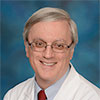 Samuel Tisherman, MD, Professor of Surgery and Director of the Division of Critical Care and Trauma Education, Program in Trauma, presented the Gelfand Lecture, sponsored by the University of Pittsburgh Chapter of Phi Delta Epsilon, on April 2. His topic was “Saving Dying Trauma Patients: The Big Chill.”
Samuel Tisherman, MD, Professor of Surgery and Director of the Division of Critical Care and Trauma Education, Program in Trauma, presented the Gelfand Lecture, sponsored by the University of Pittsburgh Chapter of Phi Delta Epsilon, on April 2. His topic was “Saving Dying Trauma Patients: The Big Chill.”
 Stefanie Vogel, PhD, Professor, Department of Microbiology & Immunology, was invited to the 6th Lorne Infection and Immunity Conference in Lorne, Australia, where she presented work from her lab entitled “Novel Strategies for Targeting Innate Immune Responses to Influenza.”
Stefanie Vogel, PhD, Professor, Department of Microbiology & Immunology, was invited to the 6th Lorne Infection and Immunity Conference in Lorne, Australia, where she presented work from her lab entitled “Novel Strategies for Targeting Innate Immune Responses to Influenza.”
 Emerson Wickwire, PhD, ABPP, CBSM, FAASM, Assistant Professor, Departments of Psychiatry and Medicine, presented a webinar for the Defense and Veterans Brain Injury Consortium on March 10. The presentation, co-authored with Dr. Michael Yochelson, Medical Director of the National Rehabilitation Hospital, was entitled “Sleep Disorders and Concussion.”
Emerson Wickwire, PhD, ABPP, CBSM, FAASM, Assistant Professor, Departments of Psychiatry and Medicine, presented a webinar for the Defense and Veterans Brain Injury Consortium on March 10. The presentation, co-authored with Dr. Michael Yochelson, Medical Director of the National Rehabilitation Hospital, was entitled “Sleep Disorders and Concussion.”
Congratulations to the following who have received honors!
 Carissa Baker-Smith, MD, Assistant Professor, Department of Pediatrics, has been accepted into the Program to Increase Diversity in Cardiovascular Health Related Research (PRIDE-CVD), which will take place at SUNY Downstate Medical Center in New York in July.
Carissa Baker-Smith, MD, Assistant Professor, Department of Pediatrics, has been accepted into the Program to Increase Diversity in Cardiovascular Health Related Research (PRIDE-CVD), which will take place at SUNY Downstate Medical Center in New York in July.
 Cherisse Berry, MD, Clinical Instructor Fellow, Department of Surgery, was awarded the 2016 Eastern Association for the Surgery of Trauma (EAST) Trauma Research Scholarship for “Prospective Evaluation of Cerebral Autoregulation and Cerebral Vasospasm in Patients with Traumatic Brain Injury Using Near-Infrared Spectroscopy (NIRS).”
Cherisse Berry, MD, Clinical Instructor Fellow, Department of Surgery, was awarded the 2016 Eastern Association for the Surgery of Trauma (EAST) Trauma Research Scholarship for “Prospective Evaluation of Cerebral Autoregulation and Cerebral Vasospasm in Patients with Traumatic Brain Injury Using Near-Infrared Spectroscopy (NIRS).”
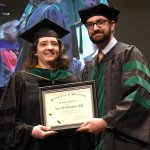 Laura Buchanan, MD, Assistant Professor, Department of Surgery, was elected by the medical students in the Class of 2016 to receive the Student Council Award for Best Clinical Faculty. The award was presented at their graduation on May 19.
Laura Buchanan, MD, Assistant Professor, Department of Surgery, was elected by the medical students in the Class of 2016 to receive the Student Council Award for Best Clinical Faculty. The award was presented at their graduation on May 19.
 Colleen Hughes Driscoll, MD, Assistant Professor, Department of Pediatrics, was honored on March 4 with the 2016 Intelligent Health Association Award for Improving Patient Care and Health Delivery. Dr. Driscoll led the University of Maryland Medical Center team that transitioned to wireless technology for resuscitation communication and patient alarms in the Neonatal Intensive Care Unit. The team also won the Intelligent Health Association Grand Award. Dr. Driscoll received the award at the 2016 Healthcare Information and Management Systems Society Conference in Las Vegas.
Colleen Hughes Driscoll, MD, Assistant Professor, Department of Pediatrics, was honored on March 4 with the 2016 Intelligent Health Association Award for Improving Patient Care and Health Delivery. Dr. Driscoll led the University of Maryland Medical Center team that transitioned to wireless technology for resuscitation communication and patient alarms in the Neonatal Intensive Care Unit. The team also won the Intelligent Health Association Grand Award. Dr. Driscoll received the award at the 2016 Healthcare Information and Management Systems Society Conference in Las Vegas.
 David Gens, MD, Professor, Department of Surgery, was elected by the medical students in the Class of 2016 to receive the Golden Apple Award for Best Clinical Faculty. The award was presented at their graduation on May 19.
David Gens, MD, Professor, Department of Surgery, was elected by the medical students in the Class of 2016 to receive the Golden Apple Award for Best Clinical Faculty. The award was presented at their graduation on May 19.
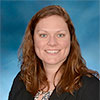 Elizabeth Parker, PhD, RD, Assistant Professor of Family & Community Medicine and Researcher, Center for Integrative Medicine, was awarded the “Recognized Young Dietitian of the Year 2016” by the Academy of Nutrition and Dietetics on March 18.
Elizabeth Parker, PhD, RD, Assistant Professor of Family & Community Medicine and Researcher, Center for Integrative Medicine, was awarded the “Recognized Young Dietitian of the Year 2016” by the Academy of Nutrition and Dietetics on March 18.
 Samuel Tisherman, MD, Professor, Department of Surgery, was honored with the Society of Critical Care Medicine (SCCM) Distinguished Service Award, which recognizes SCCM members who have made exceptional leadership contributions that have furthered the vision and mission of SCCM over a period of time.
Samuel Tisherman, MD, Professor, Department of Surgery, was honored with the Society of Critical Care Medicine (SCCM) Distinguished Service Award, which recognizes SCCM members who have made exceptional leadership contributions that have furthered the vision and mission of SCCM over a period of time.
 The following faculty in the Department of Physical Therapy and Rehabilitation Science received recognition at the American Physical Therapy Association (APTA) annual Combined Sections Meeting (CSM) in Anaheim, CA, in February: Linda Horn, PT, DScPT, MHS, GCS, NCS, Director of Academic Affairs and Assistant Professor, as a Geriatric Certified Specialist; Sandy McCombe Waller, PT, PhD, MS, NCS, Director for Educational Affairs and Associate Professor (pictured), as a Clinical Specialist by the Neurologic Specialty Council; and Roy Film, PT, DPT, OCS, FAAOMPT, Assistant Professor, at the Ceremony for Clinical Specialists for his membership on the Specialization Academy of Content Experts (SACE).
The following faculty in the Department of Physical Therapy and Rehabilitation Science received recognition at the American Physical Therapy Association (APTA) annual Combined Sections Meeting (CSM) in Anaheim, CA, in February: Linda Horn, PT, DScPT, MHS, GCS, NCS, Director of Academic Affairs and Assistant Professor, as a Geriatric Certified Specialist; Sandy McCombe Waller, PT, PhD, MS, NCS, Director for Educational Affairs and Associate Professor (pictured), as a Clinical Specialist by the Neurologic Specialty Council; and Roy Film, PT, DPT, OCS, FAAOMPT, Assistant Professor, at the Ceremony for Clinical Specialists for his membership on the Specialization Academy of Content Experts (SACE).
We applaud our colleagues on their recent appointments!
 Cherisse Berry, MD, Clinical Instructor Fellow, Department of Surgery, has been appointed to the Society of Black Academic Surgeons, Research and Education Committee’s Shock Trauma Center Research Committee.
Cherisse Berry, MD, Clinical Instructor Fellow, Department of Surgery, has been appointed to the Society of Black Academic Surgeons, Research and Education Committee’s Shock Trauma Center Research Committee.
 William Blackwelder, PhD, Professor of Medicine, Center for Vaccine Development and Institute for Global Health, has been elected a Fellow in the Society for Clinical Trials.
William Blackwelder, PhD, Professor of Medicine, Center for Vaccine Development and Institute for Global Health, has been elected a Fellow in the Society for Clinical Trials.
 Samuel Galvagno, DO, PhD, Associate Professor, Department of Anesthesiology, has been named a Fellow of the American College of Critical Care Medicine (ACCM). Fellows must make significant contributions to the perception, delivery, or management of the critically ill in the three areas of program development, scholarly contributions, and leadership.
Samuel Galvagno, DO, PhD, Associate Professor, Department of Anesthesiology, has been named a Fellow of the American College of Critical Care Medicine (ACCM). Fellows must make significant contributions to the perception, delivery, or management of the critically ill in the three areas of program development, scholarly contributions, and leadership.
 Myron Levine MD, DTPH, the Simon and Bessie Grollman Distinguished Professor of Medicine and Associate Dean for Global Health, Vaccinology and Infectious Diseases, Center for Vaccine Development and Institute for Global Health, has been selected as a member of the World Health Organization’s Strategic Advisory Group of Experts on Immunization (SAGE) Working Group on Typhoid Vaccines.
Myron Levine MD, DTPH, the Simon and Bessie Grollman Distinguished Professor of Medicine and Associate Dean for Global Health, Vaccinology and Infectious Diseases, Center for Vaccine Development and Institute for Global Health, has been selected as a member of the World Health Organization’s Strategic Advisory Group of Experts on Immunization (SAGE) Working Group on Typhoid Vaccines.
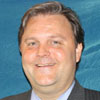 Terrence Mulligan, DO, MPH, Clinical Associate Professor, Department of Emergency Medicine, was elected to the Board of Directors of the American Academy of Emergency Medicine at the organization’s 22nd Annual Scientific Assembly, held in Las Vegas in late February. He also chairs the organization’s International Emergency Medicine Committee and its Government Affairs Committee.
Terrence Mulligan, DO, MPH, Clinical Associate Professor, Department of Emergency Medicine, was elected to the Board of Directors of the American Academy of Emergency Medicine at the organization’s 22nd Annual Scientific Assembly, held in Las Vegas in late February. He also chairs the organization’s International Emergency Medicine Committee and its Government Affairs Committee.
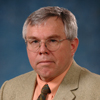 Edward Sausville, MD, PhD, Professor, Department of Medicine, has been appointed to the Editorial Board for Cancer Research by The American Association of Cancer Research.
Edward Sausville, MD, PhD, Professor, Department of Medicine, has been appointed to the Editorial Board for Cancer Research by The American Association of Cancer Research.
 Samuel Tisherman, MD, Professor, Department of Surgery, has been appointed to the Society of Critical Care Medicine Council.
Samuel Tisherman, MD, Professor, Department of Surgery, has been appointed to the Society of Critical Care Medicine Council.
Congratulations to our very productive faculty on their recent grants and contracts!
 Cynthia Bearer, MD, PhD, the Mary Gray Cobey Endowed Professor, Department of Pediatrics, received a two-year, $275,000 grant from the National Institute of Child Health and Human Development (NICHD) for “The Role of Lipid Rafts in Bilirubin Neurotoxicity.”
Cynthia Bearer, MD, PhD, the Mary Gray Cobey Endowed Professor, Department of Pediatrics, received a two-year, $275,000 grant from the National Institute of Child Health and Human Development (NICHD) for “The Role of Lipid Rafts in Bilirubin Neurotoxicity.”
 Thomas Blanpied, PhD, Associate Professor, Department of Physiology, received a one-year, $53,900 administrative supplement from the National Institute of Mental Health for “Internal Dynamics of the Postsynaptic Density.” The supplement will support an upcoming joint US/Japan workshop awarded under an NIH program entitled the US–Japan Brain Research Cooperative Program (BRCP). The meeting is titled “Current Trends and Future Directions of Synaptic Plasticity Research,” and will be held in the SMC Campus Center June 22–25. Half of the workshop’s invited participants will come from the United States and half from Japan.
Thomas Blanpied, PhD, Associate Professor, Department of Physiology, received a one-year, $53,900 administrative supplement from the National Institute of Mental Health for “Internal Dynamics of the Postsynaptic Density.” The supplement will support an upcoming joint US/Japan workshop awarded under an NIH program entitled the US–Japan Brain Research Cooperative Program (BRCP). The meeting is titled “Current Trends and Future Directions of Synaptic Plasticity Research,” and will be held in the SMC Campus Center June 22–25. Half of the workshop’s invited participants will come from the United States and half from Japan.
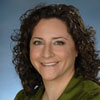 Rebecca Brotman, PhD, MPH, Assistant Professor of Epidemiology & Public Health, Institute for Genome Sciences, received a five-year, $3,653,629 award from the National Institute of Allergy and Infectious Diseases (NIAID) for “Lubricant Use and the Vaginal Microbiome.” The project began in February. Jacques Ravel, PhD, Professor of Microbiology & Immunology and Associate Director, Institute for Genome Sciences; Fauzia Vandermeer, MD, Assistant Professor, Department of Diagnostic Radiology & Nuclear Medicine; and Katrina Mark, MD, Instructor, Department of Obstetrics & Gynecology, all from the School of Medicine; and Xin He, PhD, Assistant Professor, Department of Biostatistics, University of Maryland College Park, are co-investigators on this project.
Rebecca Brotman, PhD, MPH, Assistant Professor of Epidemiology & Public Health, Institute for Genome Sciences, received a five-year, $3,653,629 award from the National Institute of Allergy and Infectious Diseases (NIAID) for “Lubricant Use and the Vaginal Microbiome.” The project began in February. Jacques Ravel, PhD, Professor of Microbiology & Immunology and Associate Director, Institute for Genome Sciences; Fauzia Vandermeer, MD, Assistant Professor, Department of Diagnostic Radiology & Nuclear Medicine; and Katrina Mark, MD, Instructor, Department of Obstetrics & Gynecology, all from the School of Medicine; and Xin He, PhD, Assistant Professor, Department of Biostatistics, University of Maryland College Park, are co-investigators on this project.
 Michael Donnenberg, MD, Professor, Department of Medicine, received a two-year, $302,684 grant from the National Institute for Allergy and Infectious Diseases (NIAID) for “Secretin Architecture.”
Michael Donnenberg, MD, Professor, Department of Medicine, received a two-year, $302,684 grant from the National Institute for Allergy and Infectious Diseases (NIAID) for “Secretin Architecture.”
 Ricardo Feldman, PhD, Associate Professor, Department of Microbiology & Immunology, received the first annual John Barranger Memorial Research Grant, worth $100,000, from the Children’s Gaucher Research Fund for “A Novel iPSC-Based System to Elucidate the Molecular Mechanisms Leading to Neuronopathic Gaucher Disease.”
Ricardo Feldman, PhD, Associate Professor, Department of Microbiology & Immunology, received the first annual John Barranger Memorial Research Grant, worth $100,000, from the Children’s Gaucher Research Fund for “A Novel iPSC-Based System to Elucidate the Molecular Mechanisms Leading to Neuronopathic Gaucher Disease.”
 Linda Horn, PT, DScPT, MHS, GCS, NCS, Assistant Professor and DPT Program Director for Academic Affairs, and Laurie Neely, DPT, Assistant Professor, both from the Department of Physical Therapy and Rehabilitation Science, along with Cherokee Layson-Wolf, PharmD, CGP, BCACP, FAPhA, Associate Professor, School of Pharmacy, have received funding for their IPE Seed Grant proposal “Improving the Health of Homeless Individuals Diagnosed with Diabetes Mellitus through Interprofessional Student Activities.”
Linda Horn, PT, DScPT, MHS, GCS, NCS, Assistant Professor and DPT Program Director for Academic Affairs, and Laurie Neely, DPT, Assistant Professor, both from the Department of Physical Therapy and Rehabilitation Science, along with Cherokee Layson-Wolf, PharmD, CGP, BCACP, FAPhA, Associate Professor, School of Pharmacy, have received funding for their IPE Seed Grant proposal “Improving the Health of Homeless Individuals Diagnosed with Diabetes Mellitus through Interprofessional Student Activities.”
 Emmanuel Mongodin, PhD, Assistant Professor of Microbiology & Immunology, Institute for Genome Sciences, is part of a joint team—led by Amy Sapkota, PhD from the University of Maryland School of Public Health at College Park and the Center for Health-Related Informatics and Bioimaging (CHIB)—that was awarded a four-year, $10 million grant from the USDA National Institute of Food and Agriculture for a new Center of Excellence dedicated to Sustainable Water Reuse.
Emmanuel Mongodin, PhD, Assistant Professor of Microbiology & Immunology, Institute for Genome Sciences, is part of a joint team—led by Amy Sapkota, PhD from the University of Maryland School of Public Health at College Park and the Center for Health-Related Informatics and Bioimaging (CHIB)—that was awarded a four-year, $10 million grant from the USDA National Institute of Food and Agriculture for a new Center of Excellence dedicated to Sustainable Water Reuse.
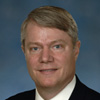 Arthur Nam, MD, Assistant Professor, Department of Surgery, and Richard Pierson, III, MD (pictured), Professor of Surgery and Director of Clinical Research, Program in Lung Healing, were awarded a $35,000 grant by the Living Legacy Foundation to study “Allotransplantation of Vascularized Thymus-Sternal Composite Tissue in Baboons.” The Living Legacy Foundation is administered by the Department of Surgery. Applications are reviewed by a committee consisting of four internal and three extramural senior academicians representing medicine, surgery, and basic science disciplines.
Arthur Nam, MD, Assistant Professor, Department of Surgery, and Richard Pierson, III, MD (pictured), Professor of Surgery and Director of Clinical Research, Program in Lung Healing, were awarded a $35,000 grant by the Living Legacy Foundation to study “Allotransplantation of Vascularized Thymus-Sternal Composite Tissue in Baboons.” The Living Legacy Foundation is administered by the Department of Surgery. Applications are reviewed by a committee consisting of four internal and three extramural senior academicians representing medicine, surgery, and basic science disciplines.
 Mark Rizzo, PhD, Associate Professor, and W. Gil Wier, PhD, Professor, both from the Department of Physiology, received a four-year, $1,543,438, multi-PI award from the National Heart, Lung and Blood Institute (NHLBI) for “Creation of Optical Biosensor Mice for Longitudinal Studies of Vascular Function.”
Mark Rizzo, PhD, Associate Professor, and W. Gil Wier, PhD, Professor, both from the Department of Physiology, received a four-year, $1,543,438, multi-PI award from the National Heart, Lung and Blood Institute (NHLBI) for “Creation of Optical Biosensor Mice for Longitudinal Studies of Vascular Function.”
 Sanford Stass, MD, Professor and Chair, Department of Pathology, was awarded a five-year, $2.25 million U24 from NCI for “University of Maryland, Baltimore Biomarker Reference Laboratory.”
Sanford Stass, MD, Professor and Chair, Department of Pathology, was awarded a five-year, $2.25 million U24 from NCI for “University of Maryland, Baltimore Biomarker Reference Laboratory.”
 Elizabeth Woytowicz, PhD Student, Department of Physical Therapy & Rehabilitation Science, was awarded a $5000 Doctoral Student Research Grant from the American College of Sports Medicine (ACSM) Foundation for her proposal “Interlimb Coordination of Complementary Bilateral Arm Movements in Young and Old Individuals.”
Elizabeth Woytowicz, PhD Student, Department of Physical Therapy & Rehabilitation Science, was awarded a $5000 Doctoral Student Research Grant from the American College of Sports Medicine (ACSM) Foundation for her proposal “Interlimb Coordination of Complementary Bilateral Arm Movements in Young and Old Individuals.”
We applaud the innovators amoung us!
 Joshua Abzug, MD, Assistant Professor, Department of Orthopaedics, co-authored the following book chapters for American Academy of Orthopaedic Surgeons Instructional Course Lectures, Volume 65: “Avoiding Errors in the Management of Pediatric Polytrauma Patients”’ “Current Strategies for the Management of Pediatric Supracondylar Humerus Fractures: Tips and Techniques for Successful Closed Treatment”; “Open Reduction Techniques for Supracondylar Humerus Fractures in Children”; “The Difficult Supracondylar Humerus Fracture: Flexion-Type Injuries”;“Transphyseal Distal Humerus Fracture”; “Common Errors in the Management of Pediatric Supracondylar Humerus Fractures and Lateral Condyle Fractures”; and “Pediatric Monteggia Fracture-Dislocations: Avoiding Problems and Managing Complications.”
Joshua Abzug, MD, Assistant Professor, Department of Orthopaedics, co-authored the following book chapters for American Academy of Orthopaedic Surgeons Instructional Course Lectures, Volume 65: “Avoiding Errors in the Management of Pediatric Polytrauma Patients”’ “Current Strategies for the Management of Pediatric Supracondylar Humerus Fractures: Tips and Techniques for Successful Closed Treatment”; “Open Reduction Techniques for Supracondylar Humerus Fractures in Children”; “The Difficult Supracondylar Humerus Fracture: Flexion-Type Injuries”;“Transphyseal Distal Humerus Fracture”; “Common Errors in the Management of Pediatric Supracondylar Humerus Fractures and Lateral Condyle Fractures”; and “Pediatric Monteggia Fracture-Dislocations: Avoiding Problems and Managing Complications.”
 Maureen Black, PhD, the John A. Scholl, MD, and Mary Louise Scholl, MD, Professor of Pediatrics, Departments of Pediatrics and Epidemiology & Public Health, was among the co-authors on “Maternal Mental Health Symptoms are Positively Related to Emotional and Restrained Eating Attitudes in a Statewide Sample of WIC Participants” in Maternal and Child Nutrition, 2016; Feb 22 [Epub ahead of print].
Maureen Black, PhD, the John A. Scholl, MD, and Mary Louise Scholl, MD, Professor of Pediatrics, Departments of Pediatrics and Epidemiology & Public Health, was among the co-authors on “Maternal Mental Health Symptoms are Positively Related to Emotional and Restrained Eating Attitudes in a Statewide Sample of WIC Participants” in Maternal and Child Nutrition, 2016; Feb 22 [Epub ahead of print].
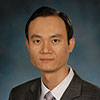 Rong Chen, PhD, Assistant Professor, Department of Diagnostic Radiology & Nuclear Medicine, was among the co-authors on “Altered Cerebellar White Matter Integrity in Patients with Mild Traumatic Brain Injury in the Acute Stage” in PLoS One, 2016 Mar 11;11(3):e0151489 [eCollection 2016].
Rong Chen, PhD, Assistant Professor, Department of Diagnostic Radiology & Nuclear Medicine, was among the co-authors on “Altered Cerebellar White Matter Integrity in Patients with Mild Traumatic Brain Injury in the Acute Stage” in PLoS One, 2016 Mar 11;11(3):e0151489 [eCollection 2016].
 Natalie Davis, MD, MMSc, Assistant Professor, Department of Pediatrics, was the senior author on “Routine Fecal Occult Blood Testing Does Not Predict Necrotizing Enterocolitis in Very Low Birth Weight Neonates” in Journal of Neonatal-Perinatal Medicine, 2016, Volume 9, issue 1.
Natalie Davis, MD, MMSc, Assistant Professor, Department of Pediatrics, was the senior author on “Routine Fecal Occult Blood Testing Does Not Predict Necrotizing Enterocolitis in Very Low Birth Weight Neonates” in Journal of Neonatal-Perinatal Medicine, 2016, Volume 9, issue 1.
 Vasken Dilsizian, MD, Professor, Department of Diagnostic Radiology & Nuclear Medicine, authored an Editorial Comment entitled “Transition From SPECT to PET Myocardial Perfusion Imaging: A Desirable Change in Nuclear Cardiology to Approach Perfection” in Journal of Nuclear Cardiology, 2016 Jun;23(3):337-8.
Vasken Dilsizian, MD, Professor, Department of Diagnostic Radiology & Nuclear Medicine, authored an Editorial Comment entitled “Transition From SPECT to PET Myocardial Perfusion Imaging: A Desirable Change in Nuclear Cardiology to Approach Perfection” in Journal of Nuclear Cardiology, 2016 Jun;23(3):337-8.
 Ricardo Feldman, PhD, Associate Professor, and Ola Awad, PhD, Research Associate, both from the Department of Microbiology & Immunology, along with Paul Fishman, MD, PhD, Professor, Department of Neurology, were among the co-authors on “A Peptide-Linked Recombinant Glucocerebrosidase for Targeted Neuronal Delivery: Design, Production, and Assessment” in Journal of Biotechnology, 2016 Mar 10;221:1-12. Dr. Feldman and Leelamma Panicker, Research Associate, were among the co-authors on “Differential Gene Expression in Human, Murine, and Cell Line-Derived Macrophages Upon Polarization” in Experimental Cell Research, 2015 Oct 20.
Ricardo Feldman, PhD, Associate Professor, and Ola Awad, PhD, Research Associate, both from the Department of Microbiology & Immunology, along with Paul Fishman, MD, PhD, Professor, Department of Neurology, were among the co-authors on “A Peptide-Linked Recombinant Glucocerebrosidase for Targeted Neuronal Delivery: Design, Production, and Assessment” in Journal of Biotechnology, 2016 Mar 10;221:1-12. Dr. Feldman and Leelamma Panicker, Research Associate, were among the co-authors on “Differential Gene Expression in Human, Murine, and Cell Line-Derived Macrophages Upon Polarization” in Experimental Cell Research, 2015 Oct 20.
 Steven Fisher, MD, Professor, Department of Medicine, had a summary of his research on “Novel Models to Study Effect of High-Altitude Hypoxic Exposure and Placental Insufficiency on Fetal Oxygen Metabolism and Congenital Heart Defects” highlighted on the Congressionally Directed Medical Research Programs website in support of American Heart Month in February. This important work was funded by the U.S. Department of Defense Peer-Reviewed Medical Research Program, and can be found at http://cdmrp.army.mil.
Steven Fisher, MD, Professor, Department of Medicine, had a summary of his research on “Novel Models to Study Effect of High-Altitude Hypoxic Exposure and Placental Insufficiency on Fetal Oxygen Metabolism and Congenital Heart Defects” highlighted on the Congressionally Directed Medical Research Programs website in support of American Heart Month in February. This important work was funded by the U.S. Department of Defense Peer-Reviewed Medical Research Program, and can be found at http://cdmrp.army.mil.
 Aletta Frazier, MD, Clinical Associate Professor, Department of Diagnostic Radiology & Nuclear Medicine, was the author of “Two Classic Patterns of Pediatric Renal Neoplasia” in Radiographics, 2016 Mar-Apr;36(2):498.
Aletta Frazier, MD, Clinical Associate Professor, Department of Diagnostic Radiology & Nuclear Medicine, was the author of “Two Classic Patterns of Pediatric Renal Neoplasia” in Radiographics, 2016 Mar-Apr;36(2):498.
 Peter Gorman, MD, Associate Professor of Neurology; Kevin Chen, PhD, Associate Professor of Family & Community Medicine; and Brian Jackson, LAc, Acupuncturist, all from the Center for Integrative Medicine, were among the co-authors on “Auricular Acupuncture for Spinal Cord Injury Related Neuropathic Pain: A Pilot Controlled Clinical Trial” in Journal of Spinal Cord Medicine, 2016 Feb 15:1-7 [Epub ahead of print].
Peter Gorman, MD, Associate Professor of Neurology; Kevin Chen, PhD, Associate Professor of Family & Community Medicine; and Brian Jackson, LAc, Acupuncturist, all from the Center for Integrative Medicine, were among the co-authors on “Auricular Acupuncture for Spinal Cord Injury Related Neuropathic Pain: A Pilot Controlled Clinical Trial” in Journal of Spinal Cord Medicine, 2016 Feb 15:1-7 [Epub ahead of print].
 Petr Hausner, MD, PhD, Associate Professor, Department of Medicine, wrote the chapter “Adoptive Cellular Immunotherapy of Cancer” in the textbook Oncologic Immunology, published in the Czech language by MF (Prague, Czech Republic) in 2015.
Petr Hausner, MD, PhD, Associate Professor, Department of Medicine, wrote the chapter “Adoptive Cellular Immunotherapy of Cancer” in the textbook Oncologic Immunology, published in the Czech language by MF (Prague, Czech Republic) in 2015.
 Fu (Peter) Hu, PhD, Associate Professor, Departments of Anesthesiology and Surgery; Shiming Yang, PhD, Research Associate, Department of Anesthesiology; Stephen Bartlett, MD, the Peter Angelos Distinguished Professor & Chair, Department of Surgery; Thomas Scalea, MD, the Francis X. Kelly Professor in Trauma Surgery and Director, Program in Trauma; and Deborah Stein, MD, MPH, the R Adams Cowley Professor in Shock and Trauma, Department of Surgery, were among the co-authors on “Automated Continuous Vital Signs Predict Use of Uncrossed Match Blood (UnXRBC) and Massive Transfusion (MT) Following Trauma” in Journal of Trauma and Acute Care Surgery, 2016 Jun;80(6):897-906.
Fu (Peter) Hu, PhD, Associate Professor, Departments of Anesthesiology and Surgery; Shiming Yang, PhD, Research Associate, Department of Anesthesiology; Stephen Bartlett, MD, the Peter Angelos Distinguished Professor & Chair, Department of Surgery; Thomas Scalea, MD, the Francis X. Kelly Professor in Trauma Surgery and Director, Program in Trauma; and Deborah Stein, MD, MPH, the R Adams Cowley Professor in Shock and Trauma, Department of Surgery, were among the co-authors on “Automated Continuous Vital Signs Predict Use of Uncrossed Match Blood (UnXRBC) and Massive Transfusion (MT) Following Trauma” in Journal of Trauma and Acute Care Surgery, 2016 Jun;80(6):897-906.
 Hong Kim, MD, MPH, Assistant Professor, Department of Emergency Medicine, was lead author on “Reversal of Opioid-Induced Ventilatory Depression Using Low-Dose Naloxone (0.04 Mg): A Case Series” in The Journal of Medical Toxicology, 2016 Mar;12(1):107-10.
Hong Kim, MD, MPH, Assistant Professor, Department of Emergency Medicine, was lead author on “Reversal of Opioid-Induced Ventilatory Depression Using Low-Dose Naloxone (0.04 Mg): A Case Series” in The Journal of Medical Toxicology, 2016 Mar;12(1):107-10.
 Erik Lillehoj, PhD, Associate Professor, Department of Pediatrics, was among the co-authors on “Pseudomonas Aeruginosa Stimulates Tyrosine Phosphorylation of and TLR5 Association with the MUC1 Cytoplamic Tail through EGFR Activation” in Inflammation Research, 2016 Mar;65(3):225-33.
Erik Lillehoj, PhD, Associate Professor, Department of Pediatrics, was among the co-authors on “Pseudomonas Aeruginosa Stimulates Tyrosine Phosphorylation of and TLR5 Association with the MUC1 Cytoplamic Tail through EGFR Activation” in Inflammation Research, 2016 Mar;65(3):225-33.
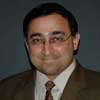 Amal Mattu, MD, Professor, Department of Emergency Medicine, was among the co-authors on “The Electrocardiogram in the ACS Patient: High-Risk Electrocardiographic Presentations Lacking Anatomically Oriented ST-Segment Elevation” in The American Journal of Emergency Medicine, 2016 Mar;34(3):611-7. In this article, Dr. Mattu and his colleagues from the University of Virginia School of Medicine and Madison County EMS in Virginia reviewed five electrocardiographic patterns (“STEMI equivalents”) caused by occlusion of an epicardial coronary artery, which threatens the left ventricle and thus heightens the risk of poor patient outcome without prompt recognition and intervention.
Amal Mattu, MD, Professor, Department of Emergency Medicine, was among the co-authors on “The Electrocardiogram in the ACS Patient: High-Risk Electrocardiographic Presentations Lacking Anatomically Oriented ST-Segment Elevation” in The American Journal of Emergency Medicine, 2016 Mar;34(3):611-7. In this article, Dr. Mattu and his colleagues from the University of Virginia School of Medicine and Madison County EMS in Virginia reviewed five electrocardiographic patterns (“STEMI equivalents”) caused by occlusion of an epicardial coronary artery, which threatens the left ventricle and thus heightens the risk of poor patient outcome without prompt recognition and intervention.
 Dirk Mayer, Dr rer nat, Associate Professor, Department of Diagnostic Radiology & Nuclear Medicine, was among the co-authors on “Brain Metabolite Levels in Recently Sober Individuals with Alcohol Use Disorder: Relation to Drinking Variables and Relapse” in Psychiatry Research, 2016 Apr 30;250:42-9, and “Hyperpolarized 13 C-lactate to 13 C-bicarbonate Ratio as a Biomarker for Monitoring the Acute Response of Anti-vascular Endothelial Growth Factor (anti-VEGF) Treatment” in NMR Biomedicine, 2016 May;29(5):650-9.
Dirk Mayer, Dr rer nat, Associate Professor, Department of Diagnostic Radiology & Nuclear Medicine, was among the co-authors on “Brain Metabolite Levels in Recently Sober Individuals with Alcohol Use Disorder: Relation to Drinking Variables and Relapse” in Psychiatry Research, 2016 Apr 30;250:42-9, and “Hyperpolarized 13 C-lactate to 13 C-bicarbonate Ratio as a Biomarker for Monitoring the Acute Response of Anti-vascular Endothelial Growth Factor (anti-VEGF) Treatment” in NMR Biomedicine, 2016 May;29(5):650-9.
 Timothy Miller, MD, Assistant Professor; Gaurav Jindal, MD, Assistant Professor; and Dheeraj Gandhi, MBBS, Professor, all from the Department of Diagnostic Radiology & Nuclear Medicine, were among the co-authors on “Use of Pipeline Flex is Associated with Reduced Fluoroscopy Time, Procedure Time, and Technical Failure Compared with the First-generation Pipeline Embolization Device” in Journal of Neurointerventional Surgery, 2016 Mar 9 [Epub ahead of print].
Timothy Miller, MD, Assistant Professor; Gaurav Jindal, MD, Assistant Professor; and Dheeraj Gandhi, MBBS, Professor, all from the Department of Diagnostic Radiology & Nuclear Medicine, were among the co-authors on “Use of Pipeline Flex is Associated with Reduced Fluoroscopy Time, Procedure Time, and Technical Failure Compared with the First-generation Pipeline Embolization Device” in Journal of Neurointerventional Surgery, 2016 Mar 9 [Epub ahead of print].
 Fred Moeslein, MD, PhD, Assistant Professor, Department of Diagnostic Radiology & Nuclear Medicine, was among the co-authors on “Prognostic Significance of Neutrophil-Lymphocyte Ratio and Platelet-Lymphocyte Ratio in Patients Treated with Selective Internal Radiation Therapy” in Journal of Gastrointestional Oncology, 2016 Apr;7(2):269-77.
Fred Moeslein, MD, PhD, Assistant Professor, Department of Diagnostic Radiology & Nuclear Medicine, was among the co-authors on “Prognostic Significance of Neutrophil-Lymphocyte Ratio and Platelet-Lymphocyte Ratio in Patients Treated with Selective Internal Radiation Therapy” in Journal of Gastrointestional Oncology, 2016 Apr;7(2):269-77.
 Darren Perkins, PhD, Research Associate, and Stefanie Vogel, PhD, Professor, both from the Department of Microbiology & Immunology, co-authored several invited reviews, including “Inflammation: Species-Specific TLR Signaling—Insight Into Human Disease” in Nature Reviews: Rheumatology, 2016 Mar 23;12(4):198-200; “Epigenetic Mechanisms Governing Innate Inflammatory Responses” in Journal of Interferon & Cytokine Research, and a commentary in Nature Reviews Rheumatology.
Darren Perkins, PhD, Research Associate, and Stefanie Vogel, PhD, Professor, both from the Department of Microbiology & Immunology, co-authored several invited reviews, including “Inflammation: Species-Specific TLR Signaling—Insight Into Human Disease” in Nature Reviews: Rheumatology, 2016 Mar 23;12(4):198-200; “Epigenetic Mechanisms Governing Innate Inflammatory Responses” in Journal of Interferon & Cytokine Research, and a commentary in Nature Reviews Rheumatology.
 Jacques Ravel, PhD, Professor of Microbiology & Immunology & Associate Director, and Bing MA, PhD, Research Associate, both from the Institute for Genome Sciences, were among the co-authors on “Functional Interactions of Archaea, Bacteria, and Viruses in a Hypersaline Endolithic Community” in Environmental Microbiology, 2016 Feb 23 [Epub ahead of print].
Jacques Ravel, PhD, Professor of Microbiology & Immunology & Associate Director, and Bing MA, PhD, Research Associate, both from the Institute for Genome Sciences, were among the co-authors on “Functional Interactions of Archaea, Bacteria, and Viruses in a Hypersaline Endolithic Community” in Environmental Microbiology, 2016 Feb 23 [Epub ahead of print].
 William Rollow, MD, Assistant Professor of Family & Community Medicine and Director of Clinical Services, Center for Integrative Medicine, co-authored “Achieving Value in Primary Care: The Primary Care Value Model” in Annals of Family Medicine, 2016 Mar;14(2):159-65.
William Rollow, MD, Assistant Professor of Family & Community Medicine and Director of Clinical Services, Center for Integrative Medicine, co-authored “Achieving Value in Primary Care: The Primary Care Value Model” in Annals of Family Medicine, 2016 Mar;14(2):159-65.
 Thomas Scalea, MD, the Francis X. Kelly Professor in Trauma Surgery and Director, Program in Trauma; and Deborah Stein, MD, MPH, the R Adams Cowley Professor in Shock and Trauma, Department of Surgery, along with the PROPPR Study Group, were among the co-authors on “Damage-Control Resuscitation and Emergency Laparotomy: Findings From the PROPPR Study” in Journal of Trauma and Acute Care Surgery, 2016 Apr;80(4):568-575. Dr. Stein and Fu (Peter) Hu, PhD, Associate Professor, Departments of Anesthesiology and Surgery were among the co-authors on “The Role of Cardiac Troponin I in Prognostication of Patients with Isolated Severe Traumatic Brain Injury” in Journal of Trauma and Acute Care Surgery, 2016 Mar;80(3):477-83.
Thomas Scalea, MD, the Francis X. Kelly Professor in Trauma Surgery and Director, Program in Trauma; and Deborah Stein, MD, MPH, the R Adams Cowley Professor in Shock and Trauma, Department of Surgery, along with the PROPPR Study Group, were among the co-authors on “Damage-Control Resuscitation and Emergency Laparotomy: Findings From the PROPPR Study” in Journal of Trauma and Acute Care Surgery, 2016 Apr;80(4):568-575. Dr. Stein and Fu (Peter) Hu, PhD, Associate Professor, Departments of Anesthesiology and Surgery were among the co-authors on “The Role of Cardiac Troponin I in Prognostication of Patients with Isolated Severe Traumatic Brain Injury” in Journal of Trauma and Acute Care Surgery, 2016 Mar;80(3):477-83.
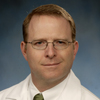 Kathirkama Shanmuganathan, MBBS, Professor; Alexis Boscak, MD, Assistant Professor; Clint Sliker, MD, Associate Professor; Uttam Bodanapally, MBBS, Assistant Professor; Krystal Archer-Arroyo, MD, Assistant Professor; Lisa Miller, MD, Assistant Professor; Thorsten Fleiter, MD, Associate Professor; and Stuart Mirvis, MD, Professor, all from the Department of Diagnostic Radiology & Nuclear Medicine, were among the co-authors on “Diagnostic Accuracy of Triple-Contrast Multi-detector Computed Tomography for Detection of Penetrating Gastrointestinal Injury: A Prospective Study” in European Radiology, 2016 Mar 16 [Epub ahead of print].
Kathirkama Shanmuganathan, MBBS, Professor; Alexis Boscak, MD, Assistant Professor; Clint Sliker, MD, Associate Professor; Uttam Bodanapally, MBBS, Assistant Professor; Krystal Archer-Arroyo, MD, Assistant Professor; Lisa Miller, MD, Assistant Professor; Thorsten Fleiter, MD, Associate Professor; and Stuart Mirvis, MD, Professor, all from the Department of Diagnostic Radiology & Nuclear Medicine, were among the co-authors on “Diagnostic Accuracy of Triple-Contrast Multi-detector Computed Tomography for Detection of Penetrating Gastrointestinal Injury: A Prospective Study” in European Radiology, 2016 Mar 16 [Epub ahead of print].
 Taehoon Shin, PhD, Assistant Professor, Department of Diagnostic Radiology & Nuclear Medicine, was among the co-authors on “CNR Improvement of MP2RAGE from Slice Encoding Directional Acceleration” in Magnetic Resonance Imaging, 2016 Mar 12 [Epub ahead of print].
Taehoon Shin, PhD, Assistant Professor, Department of Diagnostic Radiology & Nuclear Medicine, was among the co-authors on “CNR Improvement of MP2RAGE from Slice Encoding Directional Acceleration” in Magnetic Resonance Imaging, 2016 Mar 12 [Epub ahead of print].
 Kari Ann Shirey, PhD, Assistant Professor; Mira Patel, PhD, Postdoctoral Fellow; Jorge Blanco, PhD, Adjunct Associate Professor; and Stephanie Vogel, PhD, Professor, all from the Department of Microbiology & Immunology, were among the co-authors on “Novel Strategies for Targeting Innate Immune Responses to Influenza” in Mucosal Immunology, 2016; Jan 27 [Epub ahead of print].
Kari Ann Shirey, PhD, Assistant Professor; Mira Patel, PhD, Postdoctoral Fellow; Jorge Blanco, PhD, Adjunct Associate Professor; and Stephanie Vogel, PhD, Professor, all from the Department of Microbiology & Immunology, were among the co-authors on “Novel Strategies for Targeting Innate Immune Responses to Influenza” in Mucosal Immunology, 2016; Jan 27 [Epub ahead of print].
 Douglas Sward, MD, Clinical Assistant Professor; Kinjal Sethuraman, MD, MPH, Assistant Professor; and Robert Rosenthal, MD, Professor, all from the Department of Emergency Medicine, were among the co-authors on “Carbon Monoxide and ST-Elevation Myocardial Infarction: Case Reports” in Undersea and Hyperbaric Medicine, 2016 Jan-Feb;43(1):63-9.
Douglas Sward, MD, Clinical Assistant Professor; Kinjal Sethuraman, MD, MPH, Assistant Professor; and Robert Rosenthal, MD, Professor, all from the Department of Emergency Medicine, were among the co-authors on “Carbon Monoxide and ST-Elevation Myocardial Infarction: Case Reports” in Undersea and Hyperbaric Medicine, 2016 Jan-Feb;43(1):63-9.
 Sharon Tennant, PhD, Assistant Professor of Medicine, and Marcela Pasetti, PhD, Professor of Pediatrics, both from the Center for Vaccine Development and the Institute for Global Health, were co-authors on “Highlights of the 8th International Conference on Vaccines for Enteric Diseases: The Scottish Encounter to Defeat Diarrheal Diseases” in Clinical and Vaccine Immunology, 2016 Apr 4;23(4):272-81. Dr. Pasetti was also the author of “Springtime for CVI” in Clinical and Vaccine Immunology, 2016 Apr 4;23(4):247.
Sharon Tennant, PhD, Assistant Professor of Medicine, and Marcela Pasetti, PhD, Professor of Pediatrics, both from the Center for Vaccine Development and the Institute for Global Health, were co-authors on “Highlights of the 8th International Conference on Vaccines for Enteric Diseases: The Scottish Encounter to Defeat Diarrheal Diseases” in Clinical and Vaccine Immunology, 2016 Apr 4;23(4):272-81. Dr. Pasetti was also the author of “Springtime for CVI” in Clinical and Vaccine Immunology, 2016 Apr 4;23(4):247.
 Hervé Tettelin, PhD, Associate Professor of Microbiology & Immunology, Institute for Genome Sciences, was among the co-authors on “Genome Stability of Propionibacterium acnes: A Comprehensive Study of Indels and Homopolymeric Tracts” in Scientific Reports, 2016 Feb 9;6:20662.
Hervé Tettelin, PhD, Associate Professor of Microbiology & Immunology, Institute for Genome Sciences, was among the co-authors on “Genome Stability of Propionibacterium acnes: A Comprehensive Study of Indels and Homopolymeric Tracts” in Scientific Reports, 2016 Feb 9;6:20662.
 Tonya Webb, PhD, Associate Professor, Department of Microbiology & Immunology, was among the co-authors on “Human Head and Neck Squamous Cell Carcinoma–Associated Semaphorin 4D Induces Expansion of Myeloid-Derived Suppressor Cells” in The Journal of Immunology, 2016 Feb;196(3):1419-1429.
Tonya Webb, PhD, Associate Professor, Department of Microbiology & Immunology, was among the co-authors on “Human Head and Neck Squamous Cell Carcinoma–Associated Semaphorin 4D Induces Expansion of Myeloid-Derived Suppressor Cells” in The Journal of Immunology, 2016 Feb;196(3):1419-1429.
 Chris Wells, PT, PhD, CCS, ATC, Clinical Associate Professor, Department of Physical Therapy & Rehabilitation Science, was a contributing author on “Optimizing Function and Physical Activity Post Trauma: Overcoming System and Patient Challenges” in International Journal of Orthopedic and Trauma Nursing, 2015 Nov;19(4)194-206. She was also among the co-authors on “Length of Hospital Stay and Discharge Disposition in Older Trauma Patients” in Geriatric Nursing, 2015;36(2 Suppl):S3-9.
Chris Wells, PT, PhD, CCS, ATC, Clinical Associate Professor, Department of Physical Therapy & Rehabilitation Science, was a contributing author on “Optimizing Function and Physical Activity Post Trauma: Overcoming System and Patient Challenges” in International Journal of Orthopedic and Trauma Nursing, 2015 Nov;19(4)194-206. She was also among the co-authors on “Length of Hospital Stay and Discharge Disposition in Older Trauma Patients” in Geriatric Nursing, 2015;36(2 Suppl):S3-9.
 R. Gentry Wilkerson, MD, Assistant Professor, and Bryan Hayes, PharmD, Clinical Associate Professor, Department of Emergency Medicine, published a letter in the March issue of Clinical Toxicology (Philadelphia). They were reacting to a case description in the October issue of the same journal, in which a patient’s uvular edema was linked to MDMA and treated with icatibant. Drs. Wilkerson and Hayes advised caution about the assumption that the drug induced the angioedema and about the use of such an expensive medication when a causative link is questionable.
R. Gentry Wilkerson, MD, Assistant Professor, and Bryan Hayes, PharmD, Clinical Associate Professor, Department of Emergency Medicine, published a letter in the March issue of Clinical Toxicology (Philadelphia). They were reacting to a case description in the October issue of the same journal, in which a patient’s uvular edema was linked to MDMA and treated with icatibant. Drs. Wilkerson and Hayes advised caution about the assumption that the drug induced the angioedema and about the use of such an expensive medication when a causative link is questionable.
 Michael Witting, MD, MS, Associate Professor, and Siamak Moayedi, MD, CDEM, Assistant Professor, both from the Department of Emergency Medicine, were among the co-authors on “Advanced Intravenous Access: Technique Choices, Pain Scores, and Failure Rates in a Local Registry” in The American Journal of Emergency Medicine, 2016 Mar;34(3):553-7. Their investigation, supported by a grant from the Maryland Emergency Medicine Network, found that external jugular vein cannulation was established quicker, with fewer skin punctures and a lower rate of post-insertion failures, than ultrasound-guided cannulation of a peripheral vein. Their co-authors were Zhaoxin Yang, MD, Class of 2016, then a student, and Cheryll Mack, MPA, BS, RN, who worked in the adult emergency department at the University of Maryland Medical Center at the time of the study.
Michael Witting, MD, MS, Associate Professor, and Siamak Moayedi, MD, CDEM, Assistant Professor, both from the Department of Emergency Medicine, were among the co-authors on “Advanced Intravenous Access: Technique Choices, Pain Scores, and Failure Rates in a Local Registry” in The American Journal of Emergency Medicine, 2016 Mar;34(3):553-7. Their investigation, supported by a grant from the Maryland Emergency Medicine Network, found that external jugular vein cannulation was established quicker, with fewer skin punctures and a lower rate of post-insertion failures, than ultrasound-guided cannulation of a peripheral vein. Their co-authors were Zhaoxin Yang, MD, Class of 2016, then a student, and Cheryll Mack, MPA, BS, RN, who worked in the adult emergency department at the University of Maryland Medical Center at the time of the study.

